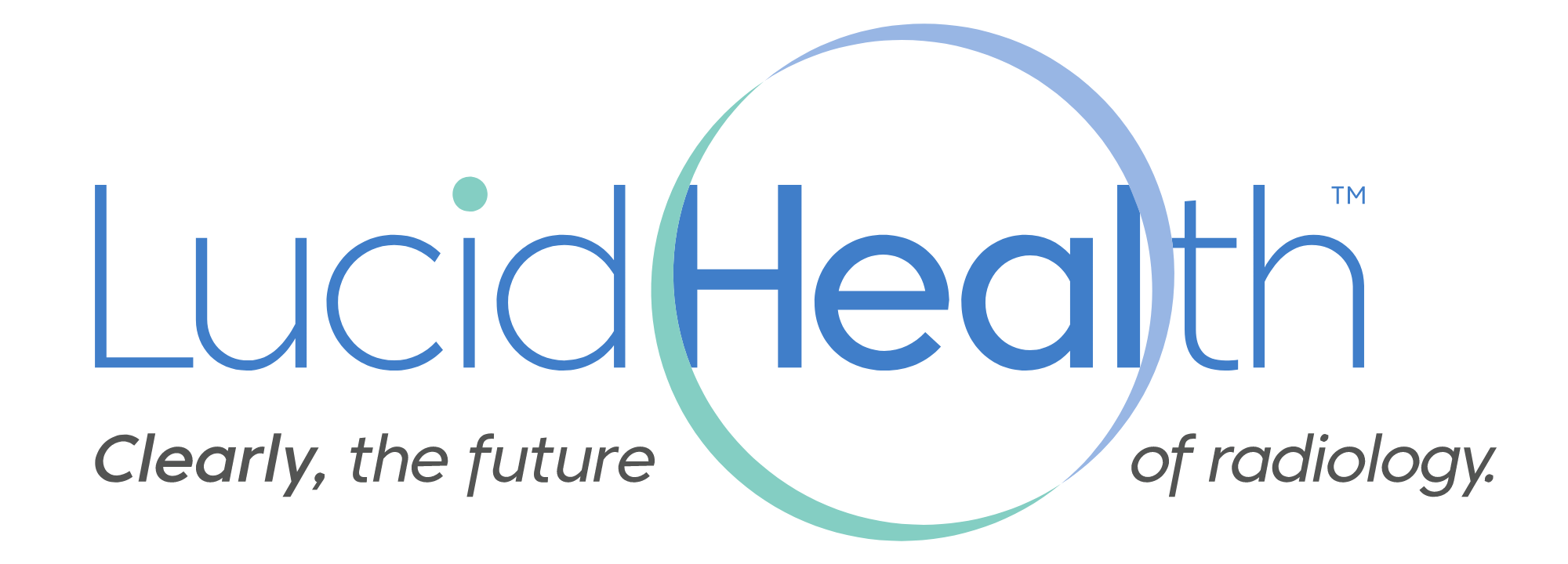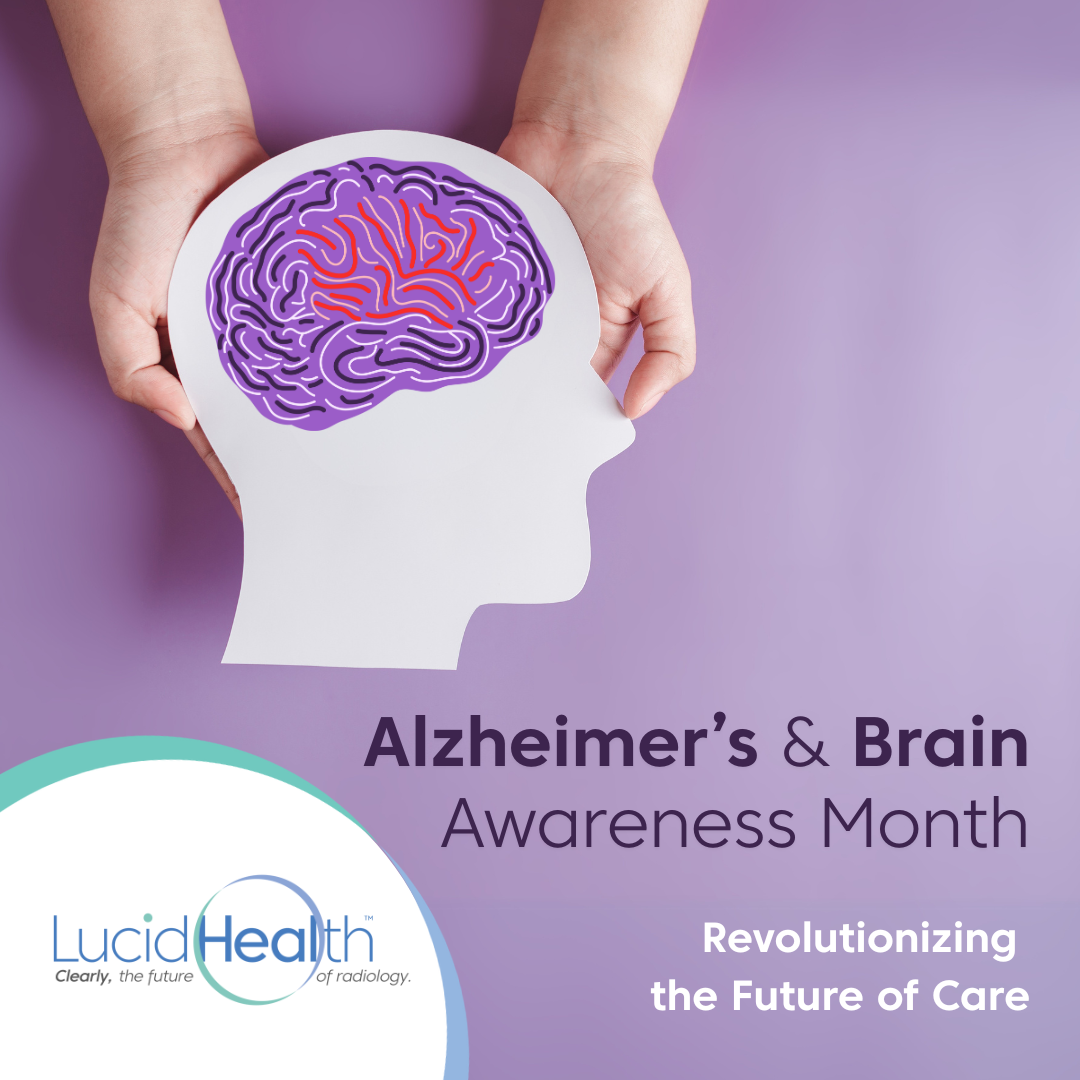June is Brain & Alzheimer's Awareness month - Alzheimer’s disease is one of the most pressing health challenges of our time— it’s estimated that 6.9 million Americans aged 65 and older are living with Alzheimer’s disease today, and another 500,000 new cases will be diagnosed this year alone (Alzheimer’s Association’s 2024 Facts and Figures Report).
Radiology is at the forefront of the fight - from early detection to advanced clinical trials, imaging is redefining how we understand, diagnose, and treat neurodegenerative disease. Across LucidHealth, teams of neuroradiologists and nuclear medicine specialists are leading this transformation, using advanced techniques like PET imaging to deliver precision care, shaping the future of Alzheimer’s medicine.
🧠 The Crucial Role of Radiology in Alzheimer’s Care
Alzheimer’s doesn’t start with memory loss—it starts in the brain, often decades before symptoms or anatomical changes arise. On it’s early stages, Alzheimer’s can be hard to differentiate clinically from other neurodegenerative disorders, including the most recently discovered LATE dementia, which closely resembles Alzheimer’s symptoms. That’s why early, accurate imaging is vital. Traditional MRI and CT scans remain essential tools for identifying structural changes in the brain, such as hippocampal atrophy or ruling out alternative causes of cognitive decline. However, these structural images only tell part of the story.
Advanced imaging—particularly PET (Positron Emission Tomography)—offers a deeper, functional view of the brain. It allows clinicians to detect Alzheimer’s pathology before symptoms emerge, as well as in early stages of the disease were the recently approved anti-amyloid medications such as Aducanumab and Lecanemab have demonstrated to be most effective.
“In a disease process where timely intervention is critical, radiology plays a pivotal role in delivering actionable, preclinical insights.
Radiologists are frequently the first to identify early neurodegenerative changes — often preceding overt cognitive decline. Our role extends well beyond image acquisition; we synthesize structural and molecular findings to refine differential diagnosis, stratify risk, and inform multidisciplinary care planning.”
— Yamil Fourzali, MD, Nuclear Medicine Physician with Radiology Regional, powered by LucidHealth
Alzheimer’s care is complex, requiring collaboration across specialties. Radiologists serve as diagnostic navigators—guiding neurologists, geriatricians, and researchers with high-impact insights from advanced imaging.
🔬 PET Imaging: A Game-Changer in Alzheimer’s Detection
PET scans offer real-time insights into how the brain is functioning—not just how it looks. With Alzheimer’s, that functional perspective is key. Different types of PET scans provide powerful diagnostic advantages:
- FDG-PET detects patterns of reduced glucose metabolism in brain regions affected by Alzheimer’s helping in its differentiation from other neurodegenerative disorders.
- Amyloid PET visualizes the buildup of amyloid-beta plaques—one of the hallmarks of Alzheimer’s disease.
- Tau PET reveals the presence of tau protein tangles, which correlate more closely with cognitive decline and disease severity.
These tools don’t just help identify the disease—they help differentiate Alzheimer’s from other types of dementia, such as Lewy body or frontotemporal dementia. That’s precision medicine in action.
🔁 Imaging as a Tool for Monitoring and Treatment
As new treatments emerge—like anti-amyloid and anti-tau monoclonal antibodies—PET imaging plays a pivotal role in patient selection, treatment monitoring, and regulatory approval.
PET scans are increasingly being used in clinical trials to:
- Confirm eligibility (e.g., amyloid-positive status)
- Measure treatment efficacy (e.g., reduction in amyloid or tau load)
- Track disease progression with quantifiable imaging biomarkers
This shift positions radiologists not just as diagnostic experts but as vital partners in ongoing care and therapeutic decision-making.
“As neuroradiologists, we’re witnessing a paradigm shift with PET imaging in Alzheimer’s disease. It’s no longer just about identifying pathology—it’s about delivering precision diagnostics, guiding patient-specific therapeutic strategies, and dynamically monitoring treatment response. This is the frontier of personalized neuroimaging.”
— Dennis Glatz, MD, Neuroradiologist with Riverside Radiology & Interventional Associates, powered by LucidHealth
🧪 A Central Role in Research and Clinical Trials
PET imaging is foundational to many of the most advanced Alzheimer’s trials in the world. Studies like AHEAD 3-45, TRAILBLAZER-ALZ 2, and DIAN-TU rely on PET not only for participant selection but for demonstrating therapeutic impact. Regulatory agencies like the FDA are now recognizing PET biomarkers as surrogate endpoints—meaning a therapy that reduces amyloid or tau on PET may qualify for accelerated approval, even before symptoms change.
Across LucidHealth, our clinical teams are actively contributing to this groundbreaking work. Our radiologists interpret PET imaging in both clinical and research contexts, helping to drive new discoveries and improve outcomes.
🌟 Powering the Future of Innovation in Radiology
As a nationally recognized leader in neurodiagnostic imaging, LucidHealth is committed to:
- Expanding access to advanced PET imaging for Alzheimer’s patients
- Supporting precision diagnostics for earlier and more confident diagnoses
- Partnering in clinical trials that bring new therapies to patients faster
- Shaping national best practices through expertise, research, and collaboration
Radiology is no longer just about looking at the brain—it’s about unlocking its secrets, changing the course of disease, and delivering hope.
Ready to step into the future of radiology with nationally recognized physicians driving clinical excellence? Explore our open Radiologist positions with our practices across the US.
Ready to learn how to bring your neurodiagnostic program into the future of patient care?
Connect with us to see how LucidHealth can help your healthcare system shape the future of Alzheimer’s care.




